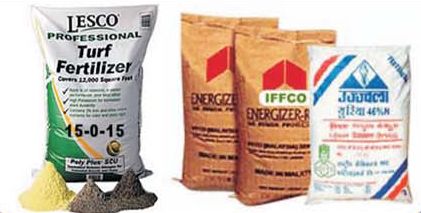
The global fertilizer market is a huge market that has been divided into several sectors, for instance, specialty fertilizer, organic fertilizer, chemical fertilizer, etc., and each of them has a considerable market share. The Global Specialty Fertilizers market accounted for $34.65 billion in 2019 and is expected to reach $66.56 billion by 2027 growing at a CAGR of 8.5% during the forecast period.
Fertilizer Packaging Bags are made of ?
Polyethylene (PE) Bag
PE bag increasingly become the new favourite due to its many advantages suich Waterproof ,moisture proof upto 30% & design of anti-skid strip for steadier stacking helped many fertilizer manufacturers.
Bag made from PE particles is flexible, durable and tear-resistant, making it ideal for heavy-duty packaging applications. Moreover, PE bag has many useful features which makes it extremely popular among fertilizer
manufacturers.
PP Woven Bag
Polypropylene Woven Bag, PP woven sacks are all names of bag or package made of polypropylene particles. PP woven bag are produced by interweaving polypropylene tapes in two directions, they are known for their extra strength and durability in comparison to other bags. They are tough, breathable, cost-effective bags, ideally suited for packaging agricultural products like grains, pulses, seeds and sugar, as well as products as diverse as sand, fodder, chemicals, cement, metal parts, etc.
Such intertwined woven not only gives extra strength to the bag, but also allows air circulation through which gases produced by the fertilizer can be exhausted without worrying about the swell of the bag. In addition, the price of the bag is cheaper than other bags such as PE bag and flexible pouches. The strength and cost have made pp woven bag one of the most widely used fertilizer packaging solution for many fertilizer producers.
Kraft Paper Bag
Paper bag is the bag made of paper, usually kraft paper. Kraft paper is produced from chemical pulp produced in the kraft process. They have high elasticity and high tear resistance, designed for packaging products with high demands for strength and durability.
In terms of category, there are single layer and multiwall paper bags. The former type can be found in department store as gift bags and come in any colour. The latter type Multiwall paper sacks or shipping sacks are often used as shipping containers for bulk materials such as fertilizer, animal feed, sand, dry chemicals, flour and cement. Many have several layers of sack papers, printed external layer and inner plies. Some paper sacks have a plastic film, foil, or polyethylene coated paper layer in between as a water-repellant, insect resistant, or rodent barrier.
Similar to pp woven bag, kraft paper bag can also add an inner layer of film or inner bag made from polyethylene (PE) or Nylon. Nylon film has greater air barrier up to 100% so that adding an inner layer of Nylon is a perfect complementation to kraft paper who vulnerable to external contaminants.
As the name suggests, the kraft paper bag is the most eco-friendly packaging solution that can be fully recycled without doing any damage to the environment. Printing on kraft paper is said to be easier than other plastic bags as well as allowing more colours, clearer images printed on it.
Flexible Packaging
Flexible packaging is the dominating packaging products that covers 80% of the total packaging production capacity. However, what’s a flexible package exactly? According to the Flexible Packaging Association, “flexible packaging is any package or any part of a package whose shape can be readily changed.”, all kinds of bags, boxes, sets and packages made of paper, aluminium foil, fibre, plastic film and their composites are flexible packages.
Flexible packaging is also known as flexible pouches which means most of the bag is produced in small pouches rather than big sacks. Almost everything we see in a agricultural materials market packed in flexible pouches such as coffee, tea, candies, so on and so forth.






